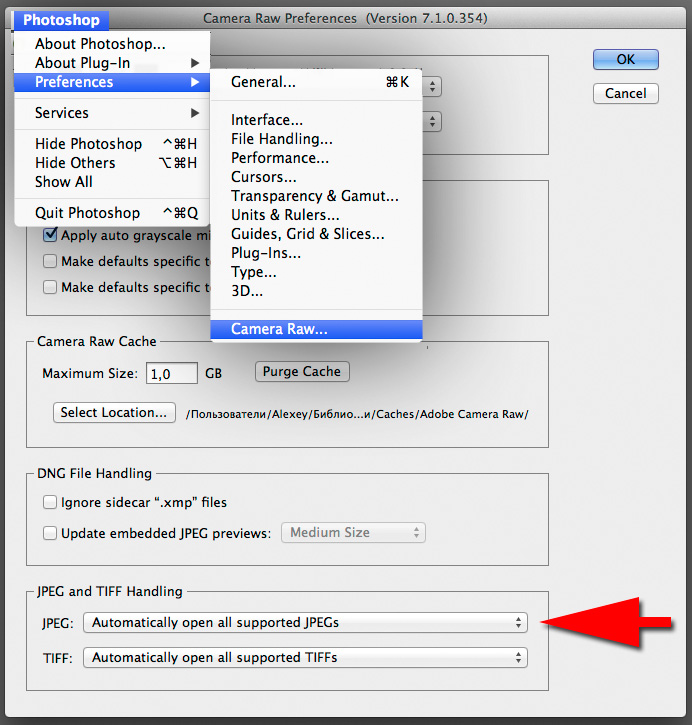

Source: Download Camera Raw Photoshop Cs6 Portable – jarlasopa In this video I will show you how to Install Camera Raw Plugin in Photoshop.
#Adobe bridge cs6 open in camera raw windows#
Windows might unzip the file for … INSTALL/UPDATE CAMERA RAW PLUGIN FOR PHOTOSHOP Source: Shifting from Photoshop CS5 to CS6 – Camera Raw HowTech How to install Camera Raw plug-in Get all of our Photoshop tutorials as PDFs! Download them today!Ĭamera Raw plug-in installer – Adobe Help Cen With the HSL / Grayscale panel open, I'll select the Convert to Grayscale option at the top, and then I'll click the Auto option to let Camera Raw take its best guess on what the black and white (grayscale) version of the photo should look like: I'll quickly convert the image to grayscale, just for example purposes, by switching from the Basic panel on the right of the dialog box to the HSL / Grayscale panel (4th panel from the left - click the tabs along the top to switch between panels). This is the first time it's being opened and edited in Camera Raw. This opens my JPEG photo inside the Camera Raw dialog box:Īt the moment, my JPEG image does not have any Camera Raw settings saved with it. So how do we know if a JPEG or TIFF image already has Camera Raw settings associated with it? To answer that question, I'll select my JPEG file in Bridge by clicking once on its thumbnail, then I'll click the Open in Camera Raw icon at the top of the Bridge interface (just as we saw earlier). The default setting for handling JPEG and TIFF files is usually the best choice. Click OK when you're done to close out of the Preferences dialog box: This way, if you do want to open a new JPEG or TIFF file in Camera Raw (by 'new', I mean a file with no Camera Raw settings associated with it), you can easily do so using one of the other methods we looked at earlier, and if you want to open it directly in Photoshop, you can simply double-click on it. In my opinion, it's best to leave the JPEG and TIFF options set to their defaults because you won't always have a need to open these types of files in Camera Raw. You'll find similar choices for the TIFF option. Disable JPEG support will completely disable Camera Raw support for JPEG files (why you'd want to do that, I don't know), while Automatically open all supported JPEGs will open all JPEGs in Camera Raw when we double-click on them in Bridge whether we've worked on them previously in Camera Raw or not.

If you click on the JPEG option, you'll see that we have a couple of other behaviors we can choose from. If no previous Camera Raw settings are found, Bridge will skip Camera Raw and open the image in Photoshop. In other words, if a JPEG or TIFF file has Camera Raw settings already applied to it, Bridge will assume you want to re-open it in Camera Raw for further editing. What this means is that a JPEG or TIFF file will only open in Camera Raw (when we double-click on it in Bridge) if we had previously opened and made changes to it in Camera Raw. The JPEG and TIFF Handling options in the Camera Raw Preferences.īy default, the JPEG option is set to Automatically open JPEGs with settings, and the TIFF option is set to the similar Automatically open TIFFs with settings. The image on the left is a raw file, the one in the middle is a JPEG, and on the right, we have a TIFF image: Here, I have Adobe Bridge (CS6 in this case) open on my screen and I've navigated to a folder on my desktop containing three images. The best way to open any type of image in Camera Raw (or in Photoshop) is with Adobe Bridge, so that's what I'll be using in this tutorial. Let's start by learning how to open raw files in Camera Raw. For that, we'll need to take a look at Camera Raw's Preferences to make sure things are set up the way that best fits your style of working. In this tutorial, we'll learn how to open all three file types in Camera Raw.Īs we'll see, opening raw files in Camera Raw is simple and straightforward (as it should be), yet while that's mostly true for opening JPEG and TIFF files, things can get a little confusing if you're used to opening images simply by double-clicking on them. Over time, Adobe added the ability for Camera Raw to edit JPEG and TIFF images as well. I will show you how to adjust the colors using camera raw.Īs we've learned so far in previous tutorials, Adobe Camera Raw is a plug-in for Photoshop that was initially designed for processing and editing photos captured in your camera's raw file format.

In this photoshop tutorial, you will learn how to open and use camera raw filter in photoshop cs6.

Raw images are minimally processed in the camera they're effectively the exact data recorded by the camera's sensor. This course provides in-depth training on Camera Raw 7, the Photoshop CS6 component that enables photographers to open and manipulate raw format images.


 0 kommentar(er)
0 kommentar(er)
